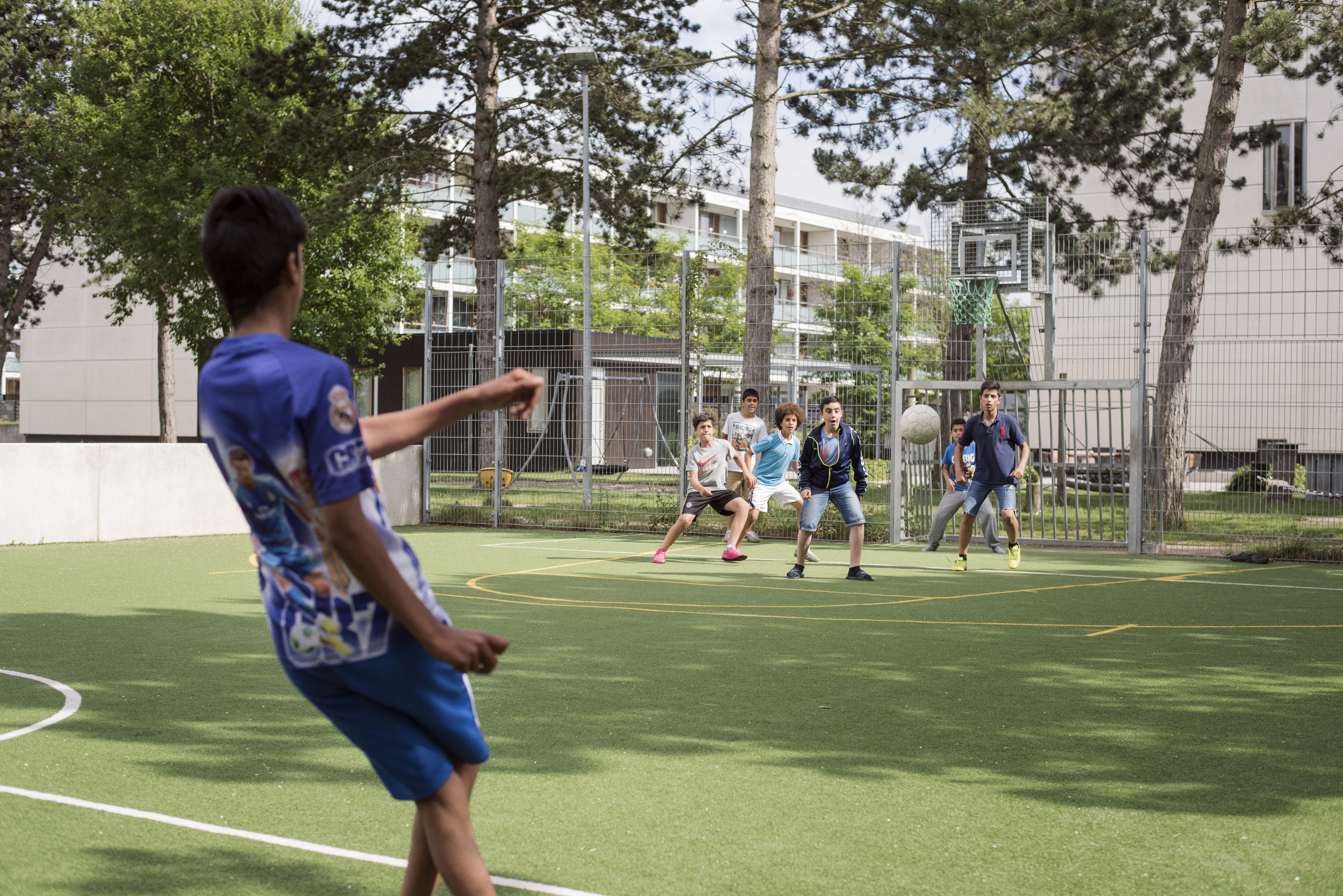Gyldenrisparken
Gyldenrisparken on Amager, Copenhagen, is a housing block from the mid-60s consisting of non-profit housing and a nursing home. Around the turn of the millennium, the concrete buildings were so worn down that demolition was considered, but instead the buildings underwent an extensive renovation based on a plan prepared by Lejerbo, the City of Copenhagen and the residents of Gyldenrisparken. As part of a large consortium, Vandkunsten Architects won the overall commission for the comprehensive renovation together with Witraz Arkitekter and ZESO Architects in 2005. The project is a mix of renovation, transformation and newbuilding, and the strategy is based on upholding the existing qualities of the area, landscape and housing. Today, both young people, old people and families with children are on the waiting list.
Since the transformation of the non-profit housing neighbourhood Gyldenrisparken was initiated, waiting time has increased from 4-6 months to 17-35 years. Today, 85 % of the residents want to stay, and 61 % believe that the reputation of the area has improved as a result of the physical and social measures.
Ownership & Security
The modernisation of Gyldenrisparken has involved future-proofing the area’s 432 non-profit residential units, improving the outdoor areas and building a new nursing centre and two day-care facilities. The project was launched in 2005 and completed in 2015. According to Lejerbo, the waiting time on a one-bedroom, renter-occupied flat has gone up from 4-6 months to 17-18 years and to 30-35 years for family flats.
At Realdania’s expert committee meeting on 17 March 2017, Claus Bech-Danielsen, Architect MAA and researcher at the Danish Building Research Institute, presented that 85 % of the residents at Gyldenrisparken want to stay there after the renovation. On page 179 of its anniversary publication ‘Boligområder i Bevægelse’ from April 2017, the Danish National Building Fund writes: “In Gyldenrisparken, the residents in the neighbouring areas, which includes villas and expensive owner-occupied flats, were asked if they could imagine living in the non-profit housing area in the future, to which almost 30 % responded that they could. That was not the case before the architectural transformation of the residential area.”
The improvements of Gyldenrisparken include e.g. facade renovation and a new lighting design. By integrating more windows in the housing blocks, the outdoor areas have become visible from several flats at the same time, and blind angles and poorly lit areas have been eliminated. A new nursing home, new path networks and two new daycare facilities mean that more outsiders come to know the area and result in increased in traffic. According to the Danish National Building Fund, these crime-prevention measures have been very successful and increased the sense of security in the area.
Reputation & Local Pride
According to the housing association at Gyldenrisparken, the involvement of residents and optimisation of housing conditions have resulted in greater satisfaction, community and pride in the area among the residents. In an article published by DR Nyheder on 30 November 2016, Claus Bech Danielsen, Architect MAA and researcher at the Danish Building Research Institute, describes how it is particularly important that neighbours and people from outside the criticised residential areas come and use the facilities of the area because it helps break down prejudices about the place and its residents. Claus Bech Danielsen is the co-author of a report that evaluates six major construction projects in Denmark. The report states that a total of 61 % of the residents of Gyldenrisparken believe that the reputation of the area has improved in the past years due to the physical and social initiatives. The report from the Danish Building Research Institute is expected to be published in 2017-2018.
The renovation of Gyldenrisparken was nominated for one of the world’s most prestigious architectural awards in 2012, Mies van der Rohe Award, and the same year the area was visited by H.R.H. Prince Charles and H.R.H. Crown Prince Frederik. These are the kinds of events that help change the reputation of the area, break down prejudices, unify the residents and put focus on the potentials and qualities of the area.
About the Case
The comprehensive plan for Gyldenrisparken involves both renovation, transformation and a new building. The housing blocks in Gyldenrisparken have been revamped, while still retaining their overall look. Large windows bring more light into the homes, and large balconies encourage the residents spend time there and tie outdoor and indoor life together. New bays serve as a window mirrors and create view and security. The old nursing home has now been converted into a play school, kindergarten and after-school centre.
The building has been upgraded to a passive house with a high insulation value, low-energy glazing, structures for passive solar heat absorption and high-performance ventilation systems, resulting in a 75 % lower energy consumption compared to other standard housing. The building now also has a large roof-top garden for its users. As part of the renovation, several small flats have been joined into large family flats to attract a new type of residents and to add a more diverse and resourceful resident profile into Gyldenrisparken.
